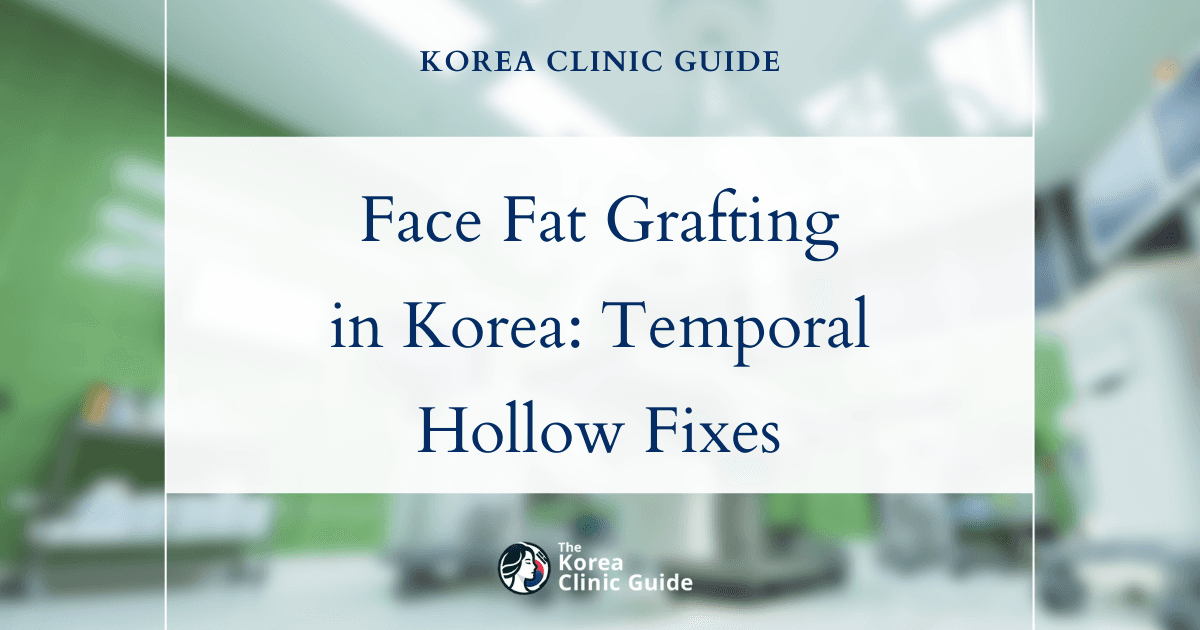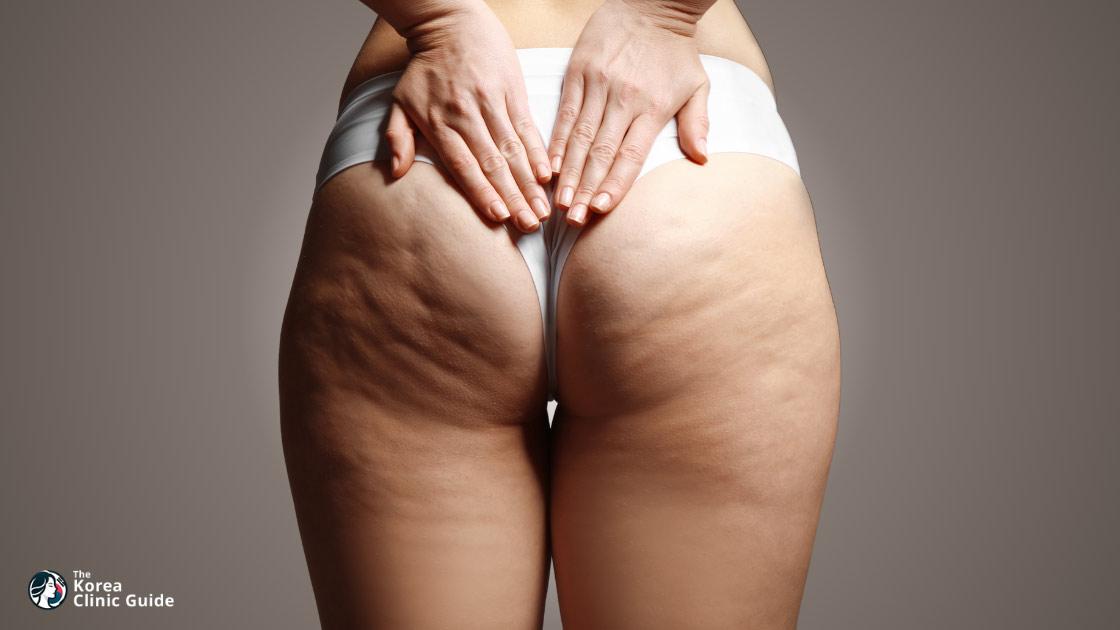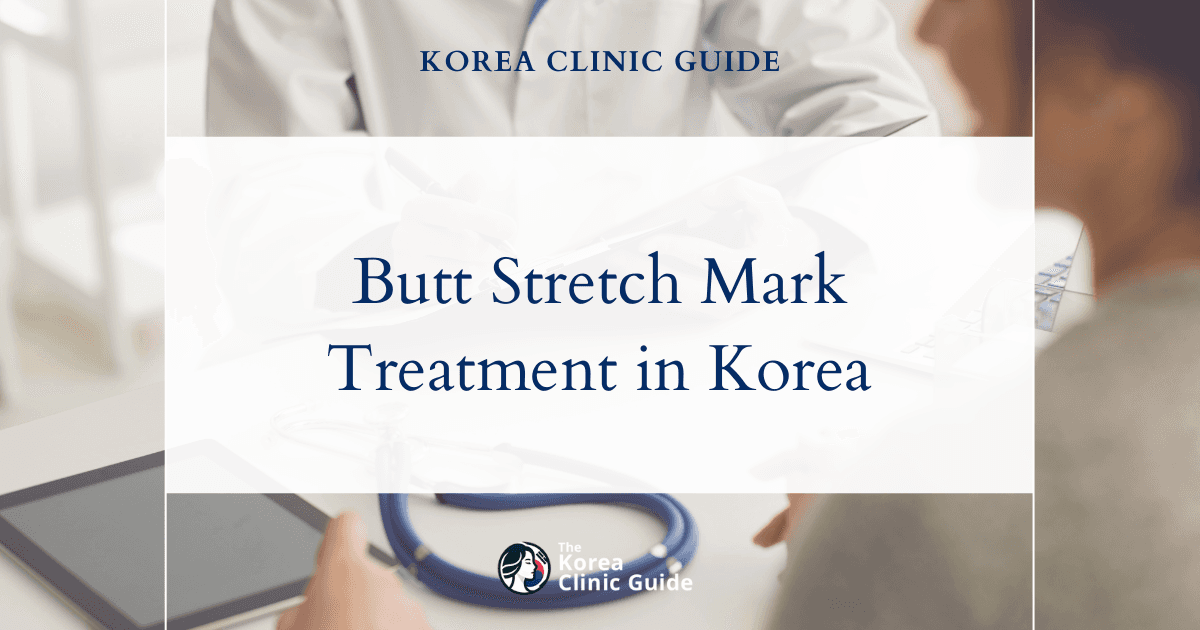Medical Tourism Blog
Revise Post-Implant Malposition with Expert Liposuction in Korea

Table of contents
- Revision Liposuction: A Detailed Medical Procedure
- Best Clinics in Korea
- The Process of Undergoing Revision Liposuction in South Korea
- Cost Analysis: Revision Liposuction in South Korea vs. Other Countries
- Patient Experiences and Outcomes: Addressing Malposition with Revision Liposuction
- Conclusion: Making an Informed Decision
- References
Breast implant malposition is a common complication after breast augmentation surgery. It happens when breast implants shift from their original placement, disrupting the intended look. This displacement can cause visible distortions, physical discomfort, and emotional distress, affecting not just appearance but also a patient’s self-esteem and overall well-being.

Common Pseudonyms and Types of Malposition
Patients often describe implant displacement with terms like "implant moved from pocket" or "uniboob." Medically, malposition is classified by the direction the implant moves:
- Inferior Malposition ("Bottoming Out" or "Double Bubble"): The implant drops too low, often below the inframammary fold (IMF), causing fullness in the lower breast and emptiness above. Sometimes, two parallel folds appear under the breast, creating the "double bubble" look. This is the most common malposition type.
- Superior Malposition ("Riding High"): The implant sits too high on the chest, either because it didn’t settle properly or scar tissue blocks its descent, resulting in an unnatural elevated appearance.
- Lateral Malposition ("Lateral Slide to Armpits"): The implant shifts outward toward the armpits, making breasts look widely spaced.
- Medial Malposition ("Symmastia" or "uniboob"): Implants move too close to the center, sometimes merging visually.
- Rotational Malposition: The implant rotates within its pocket, which can distort breast shape if rotation exceeds 30 to 60 degrees.
Key Causes of Implant Displacement
Malposition usually results from multiple factors:
- Surgical Technique: Poorly created implant pockets—too large, asymmetrical, or improperly dissected—allow implants to move freely. Over-dissection near the sternum can weaken medial tissue, causing implants to migrate centrally.
- Implant Characteristics: Larger, heavier implants stretch tissues more, increasing displacement risk. Smooth implants tend to shift more than textured ones, though textured implants carry other risks.
- Anatomical Factors: Skin elasticity, breast tissue thickness, and chest muscle positioning affect implant support. Thin skin or minimal breast tissue offers less natural support.
- Capsular Contracture: Scar tissue tightening around the implant can distort its shape and position.
- Post-Surgical Care: Early strenuous activity or trauma can disrupt healing and cause shifting. Following surgeon guidelines, including wearing support garments, is essential.
- Natural Changes Over Time: Aging, pregnancy, weight changes, and tissue stretching can lead to late-onset malposition.
Incidence and the Need for Revision
Breast augmentation mammoplasty (BAM) is the most common cosmetic surgery worldwide. Despite its popularity, breast implant malposition (BIM) accounts for a significant portion of reoperations—4.7%-5.2% after primary BAM and about 10% after revision BAM for severe cases. Considering all severity levels, the incidence is likely higher, highlighting the frequent need for revision surgery.
This prevalence shows that breast augmentation is often a lifelong journey, not a one-time event. Patients should be aware of potential future corrections. Surgeons face ongoing challenges in achieving stable, lasting implant positioning despite advances in techniques and materials.
Malposition’s causes are complex and intertwined. Correction usually requires a tailored approach combining pocket repair (e.g., capsulorrhaphy), implant exchange, and tissue reinforcement (e.g., biological scaffolds like ADM or SERI). Consulting an experienced surgeon for a thorough assessment is crucial, as simple repositioning often isn’t enough. The success of revision depends heavily on the initial surgery and individual healing responses.
Revision Liposuction: A Detailed Medical Procedure
Definition and Purpose of Revision Liposuction
Revision liposuction is a specialized corrective surgery aimed at improving or perfecting results from previous liposuction. Its goal is to smooth contour irregularities, fix asymmetries, and refine body shape caused by the initial procedure. Unlike primary liposuction, which removes excess fat, revision liposuction addresses cosmetic issues like lumps or unevenness that developed afterward. This requires a different approach due to altered tissues and scar formation.
Why Revision Liposuction is Needed
People seek revision liposuction mainly because they’re unhappy with their initial results. Common reasons include:
- Uneven Fat Removal: Lumpy, asymmetrical, or irregular contours left behind.
- Over- or Under-Removal of Fat: Too much fat causes depressions; too little leaves unwanted deposits.
- Skin Laxity: Loose or sagging skin affecting appearance, sometimes needing tightening.
- Scar Tissue: Scarring from the first surgery causing unevenness.
- Weight Changes: Post-surgery weight fluctuations altering results.
- Limitations of Initial Technique: Earlier methods or technology may have prevented optimal outcomes.
Techniques and Methods in Revision Liposuction
Revision liposuction demands precision and expertise to work with scarred or altered tissues. Techniques include:
- Fat Redistribution/Grafting: Harvesting fat from donor sites and injecting it into depressions or uneven areas to restore smooth contours and natural feel.
- Precision Cannulas: Using micro-sized cannulas for selective fat removal and minimal tissue damage.
- Energy-Based Devices: Tools like VASER ultrasound or Renuvion skin tightening help break down fat, smooth contours, and firm skin.
- Skin Tightening: Combined procedures to improve skin elasticity when laxity is an issue.
- Scar Revision: Techniques like layered closure and laser therapy to reduce scar visibility.
The Role of Revision Liposuction in Breast Implant Revision
While revision liposuction mainly corrects prior liposuction results, fat grafting—which requires liposuction to harvest fat—is increasingly important in breast implant revision. Liposuction itself doesn’t reposition implants but provides fat to reshape the breast around or after implant removal.
Fat grafting helps with:
- Filling Depressions and Contour Irregularities: Especially for "double bubble" deformities where implants sit too low.
- Camouflaging Implant Edges and Rippling: Adding volume over thin skin to soften visible implant edges.
- Restoring Volume Post-Explant: Filling concavities after implant removal.
- Correcting Asymmetry: Adding volume to smaller or deficient breasts.
This approach uses the patient’s own tissue for natural, harmonious results. Because revision surgery involves scarred and altered tissues, surgeon experience and artistry are vital. Patients should choose board-certified plastic surgeons skilled in revisions for the best outcomes.
Recovery from Revision Liposuction
Recovery varies by procedure complexity but generally lasts 2 to 6 weeks. Compression garments are essential to reduce swelling and help skin conform to new contours.
Common post-op effects include swelling, bruising, and discomfort, manageable with medication. Light activities can resume after about a week, but strenuous exercise and heavy lifting should be avoided for several weeks. While swelling and bruising improve within weeks, final results may take up to six months as tissues settle. Following all post-op instructions is key to a smooth recovery.
Best Clinics in Korea
Listed below are the best clinics in Korea:
| Clinic Name | Key Features | Special Techniques |
|---|---|---|
| Lydian Plastic Surgery Clinic | Led by Dr. An Kyung Chun with 20+ years experience; boutique personalized care; VIP and celebrity clientele; located in Cheongdam, Gangnam | 5D sculpting (high-definition liposuction); stem cell therapy; minimally invasive, scar-minimizing solutions; fat grafting and body contouring |
| Okay Plastic Surgery Clinic | Holistic, patient-centered approach; led by renowned female plastic surgeon; comprehensive advanced services; empathetic care | Body contouring; breast augmentation; facial rejuvenation; scar management using cutting-edge medical techniques |
| Seojin Plastic Surgery Clinic | Led by Dr. Lee Hyungmin, one of Korea’s 100 Good Doctors; 16+ years experience; one-doctor model; located in Gangnam | 3-STEP Micro Liposuction Process; Velody2 lifting laser technology; hybrid breast implants; 3D imaging; high-definition endoscopy |
Lydian Plastic Surgery Clinic
Lydian Plastic Surgery Clinic, located in the prestigious Cheongdam area of Gangnam, Seoul, is a premier destination for patients seeking expert care in post-implant malposition correction and other advanced cosmetic procedures. Led by Dr. An Kyung Chun, a globally recognized specialist with over 20 years of experience, the clinic offers a boutique, personalized approach that ensures each patient receives meticulous attention and outstanding results. Renowned for pioneering innovative techniques such as 5D sculpting (high-definition liposuction), Lydian Clinic combines cutting-edge technology with Dr. An’s extensive expertise to deliver minimally invasive, scar-minimizing solutions. This makes it the best choice for correcting implant malpositions, where precision and aesthetic finesse are critical for restoring natural contours and patient confidence.
Why Lydian Plastic Surgery Clinic is the best choice for post-implant malposition correction in Korea:
- Led by Dr. An Kyung Chun, a world-renowned expert with over two decades of specialized experience in body sculpting and cosmetic surgery.
- Boutique clinic model offering personalized, one-on-one care from a single specialist, ensuring tailored treatment plans.
- Advanced surgical techniques such as 5D sculpting and stem cell therapy that minimize scarring and promote natural-looking results.
- Proven track record with VIP and celebrity clientele, reflecting trust and excellence in cosmetic outcomes.
- Comprehensive expertise in fat grafting and body contouring, essential for correcting implant malpositions and achieving balanced aesthetics.
- Located in Cheongdam, Gangnam, a hub for cutting-edge cosmetic surgery in Seoul, providing access to the latest innovations and technologies.
- Commitment to minimally invasive procedures that reduce recovery time and enhance patient comfort without compromising results.
You can check out their website here: Lydian Plastic Surgery Clinic Website
Okay Plastic Surgery Clinic
Okay Plastic Surgery Clinic stands out as the premier choice for post-implant malposition treatment in Korea due to its holistic and patient-centered approach to aesthetic care. The clinic is led by a team of highly specialized professionals, including a renowned female plastic surgeon with extensive experience, ensuring that every patient receives precise, sincere, and individualized treatment tailored to their unique needs. Beyond simply correcting implant malpositions, Okay Plastic Surgery Clinic offers a comprehensive range of advanced services—from body contouring and breast augmentation to facial rejuvenation and scar management—utilizing cutting-edge medical techniques and empathetic care. This dedication to combining expertise with personalized transformation makes Okay Plastic Surgery Clinic the best destination for those seeking effective and refined solutions for post-implant malposition in Korea.
You can check out their website here: Okay Plastic Surgery Clinic Website
Seojin Plastic Surgery Clinic
Seojin Plastic Surgery Clinic, located in the heart of Gangnam, Seoul, is a premier destination for patients seeking expert care in post-implant malposition correction and other advanced aesthetic procedures. Led by Dr. Lee Hyungmin, a distinguished surgeon recognized as one of Korea’s 100 Good Doctors, the clinic combines over 16 years of experience with cutting-edge technology and personalized treatment plans. Seojin Clinic specializes in innovative breast surgeries, including hybrid breast implants and precise corrective techniques, ensuring natural-looking and harmonious results. The clinic’s unique 3-STEP Micro Liposuction Process and Velody2 lifting laser technology further enhance outcomes by promoting smooth contours and improved skin elasticity. With a one-doctor model, patients receive comprehensive, attentive care from consultation through recovery, making Seojin Plastic Surgery Clinic the best choice for addressing post-implant malposition in Korea.
Why Seojin Plastic Surgery Clinic is the best for post-implant malposition in Korea:
- Expert leadership by Dr. Lee Hyungmin, recognized among Korea’s top 100 doctors, with over 16 years of specialized experience.
- Personalized, one-on-one care ensuring tailored treatment plans and close monitoring throughout the entire process.
- Advanced 3-STEP Micro Liposuction Process for safe, precise fat removal and smooth, natural contouring.
- Use of Velody2 lifting laser technology to improve skin elasticity and firmness, ideal for correcting sagging or irregularities after implant procedures.
- Comprehensive breast surgery options including hybrid breast implants that combine implants with fat grafting for natural aesthetics.
- State-of-the-art diagnostic tools such as 3D imaging and high-definition endoscopy to accurately assess implant positioning and plan corrective surgery.
- A holistic approach to aesthetic enhancement, addressing both structural correction and skin quality for optimal, long-lasting results.
- Conveniently located in Gangnam, Seoul, providing easy access to world-class medical care in a comfortable, private clinic setting.
You can check out their website here: Seojin Plastic Surgery Clinic Website
The Process of Undergoing Revision Liposuction in South Korea
Why South Korea for Medical Tourism?
South Korea is a top global destination for plastic surgery, attracting many international patients. It offers high-quality care, skilled surgeons, advanced technology, and competitive pricing, especially for aesthetic procedures. Clinics emphasize patient-centered care tailored to medical tourists.
Affordable prices reflect high procedure volumes, healthcare efficiency, and a national focus on patient safety and satisfaction, not lower quality. This makes South Korea attractive for complex revision surgeries.
Step-by-Step Patient Journey
International patients typically follow a structured process:
- Initial Virtual Consultation: Online meetings allow patients to discuss history, concerns, and goals with Korean surgeons before travel.
- Travel Arrangements: Patients plan trips to cities like Seoul or Busan, where major clinics are located near international airports.
- In-Person Consultation and Tests: Upon arrival, surgeons perform physical exams, finalize plans, and conduct medical tests (blood work, imaging, sometimes psychiatric evaluation). Multilingual staff or translators assist communication.
- Surgical Procedure Day: Revision breast surgery, often including fat grafting via liposuction, is done under general anesthesia, lasting 1–3 hours. Surgeons reuse original incisions when possible to minimize new scars. Procedures may include implant removal, scar tissue excision, implant exchange, breast lifts, and pocket adjustments.
South Korean clinics use advanced techniques such as:
- Endoscopic Transaxillary Re-operation: Using FULL HD endoscopes through armpit incisions for precise, scar-minimizing surgery.
- Microscale Dual Plane Technique & 3D Spatial Dissection: For tailored results with less swelling.
- 3D Breast Implant Modeling: Visualizing outcomes pre-surgery to improve planning and patient understanding.
- Hybrid Breast Augmentation: Combining implants with fat grafting and Platelet-Rich Plasma (PRP) to enhance fat survival and reduce inflammation.
These innovations improve precision, safety, and patient satisfaction, making South Korea a leader in complex revisions.
- Post-Operative Care: Patients stay in hospital for 24 hours under observation, with private rooms and thorough follow-up care. Instructions include wearing compression garments and avoiding strenuous activity for 4–6 weeks. Swelling peaks in the first week and resolves mostly by 3–6 months, with final breast shape settling by 6–12 months.
- Language and Logistical Support: Clinics provide interpretation, translation, airport transfers, and accommodation assistance, ensuring a smooth experience for international patients.
Cost Analysis: Revision Liposuction in South Korea vs. Other Countries
South Korea offers excellent value for revision breast surgery and related procedures, combining competitive prices with high-quality care.
Average Costs of Revision Liposuction and Breast Revision in South Korea
- Revision Breast Surgery: Approximately 13,000,000 to 22,000,000 KRW ($8,944 to $15,136 USD as of May 2025).
- General Liposuction: $2,500 to $7,000 USD.
- 360 Liposuction: Around $5,350 to $6,000 USD.
Fat grafting, requiring liposuction for fat harvesting, fits within these ranges when combined with breast revision.
What's Included in the Cost
South Korean clinics often offer all-inclusive packages covering:
- Surgeon’s fees, anesthesia, operating room use
- Overnight hospital stays if needed
- Pre-surgical tests (blood work, imaging)
- Post-operative care and follow-ups
- Accommodation in patient guesthouses or partner hotels
- Airport transfers
- Language assistance (interpretation and translation)
- Sometimes special medical insurance for complications
This comprehensive pricing reduces unexpected expenses and logistical hassles, making the overall experience more predictable and cost-effective.
Factors Influencing Cost
Costs vary based on:
- Surgeon’s experience and reputation
- Clinic location and facilities
- Procedure complexity (implant exchange, capsulotomy, fat grafting, breast lift)
- Implant type and brand
Comparative Cost Analysis for Medical Tourists
| Procedure Category | South Korea (USD) | United States (USD) | Europe (USD) | Thailand (USD) | Turkey (USD) |
|---|---|---|---|---|---|
| Liposuction (General) | $2,500 - $7,000 | $4,000 - $10,000 | $3,500 - $8,000 | $2,000 - $6,000 | $2,000 - $5,000 |
| 360 Liposuction | $5,350 - $6,000 | - | - | $5,000 (Turkey) | $5,000 (Turkey) |
| Breast Augmentation | $5,000 - $10,000 | $6,000 - $12,000 | $5,500 - $11,000 | $4,000 - $8,000 | $3,500 - $7,000 |
| Revision Breast Surgery | $8,944 - $15,136 | - | - | - | - |
Note: Data gaps exist for some procedures in certain countries.
Value Proposition: Quality of Care vs. Cost
South Korea’s competitive pricing reflects high procedure volumes, healthcare efficiency, and a strong commitment to patient satisfaction and safety. The all-inclusive packages, extensive post-op care, and logistical support add significant value beyond surgery fees. This integrated approach offers transparency and convenience, making South Korea a top choice for international patients seeking quality plastic surgery at reasonable costs.
Patient Experiences and Outcomes: Addressing Malposition with Revision Liposuction
Patients undergoing revision surgery for breast implant malposition often experience major improvements, both physically and psychologically.
How Revision Liposuction (Especially Fat Grafting) Addresses Specific Malposition Issues
Fat grafting, performed by harvesting fat via liposuction, is a versatile adjunct in breast implant revision:
- Double Bubble Deformity: Fat injections blend the implant with natural tissue, smoothing the contour and resolving the double bubble.
- Rippling or Wrinkles: Adding fat over thin skin softens visible implant edges and surface irregularities.
- Contour Irregularities and Depressions: Fat fills lumps or uneven areas, restoring symmetry.
- Volume Restoration Post-Explant: Fat transfer replaces lost volume after implant removal.
- Addressing Asymmetry: Fat grafting adds volume to smaller or deficient breasts for better balance.
This natural tissue approach allows customized, harmonious results.
Reported Patient Satisfaction and Benefits
Patients report:
- Improved Aesthetics: Balanced, smooth, natural-looking breasts with corrected malposition.
- Enhanced Confidence: Relief from emotional distress, improved self-esteem, and body image.
- Physical Comfort: Reduced pain and discomfort from implant misplacement or scar tissue.
- Restored Symmetry: Achieving even breast size and shape.
Realistic Expectations and Potential Limitations
Patients should understand:
- Fat Graft Survival: Typically 50%-70% of grafted fat survives long-term; multiple sessions (1–3) may be needed.
- Recovery Variability: Healing times differ by individual and procedure extent.
- Scarring: Some new scars may form; existing scars may require revision.
- Not All Symptoms Resolve: Complex issues like Breast Implant Illness (BII) symptoms may persist despite surgery.
Testimonials and Case Examples
- A patient with "bottoming out" had implants replaced with smaller ones and pocket tightened, resulting in symmetrical, well-shaped breasts.
- Another with wide-set implants and bottoming out underwent pocket repair and breast lift, restoring shape and separation.
- Patients with double bubble deformity achieved resolution after 1–3 fat grafting sessions.
- Many express high satisfaction, praising surgeon skill and improved confidence.
These stories highlight revision surgery’s ability to address both physical and emotional challenges of malposition.
Conclusion: Making an Informed Decision
Breast implant malposition is a common complication with various forms and causes, often requiring revision surgery. Revision liposuction, especially fat grafting, plays a vital role in correcting contour irregularities and restoring natural breast shape. South Korea stands out as a leading destination for revision surgery, offering advanced techniques, comprehensive care, and competitive pricing. Patients typically experience significant aesthetic, physical, and psychological benefits after revision.
Choosing a board-certified, experienced plastic surgeon is essential for accurate diagnosis and effective treatment. Careful pre-operative planning and strict adherence to post-operative care protocols maximize the chances of a successful, lasting outcome.
References
1, 2, 3, 4, 5, 6, 7, 8, 9, 10, 11, 12, 13, 14, 15, 16, 17, 18, 19, 20, 21, 22, 23, 24, 25, 26, 27, 28, 29, 30, 31, 32, 33, 34, 35, 36, 37















